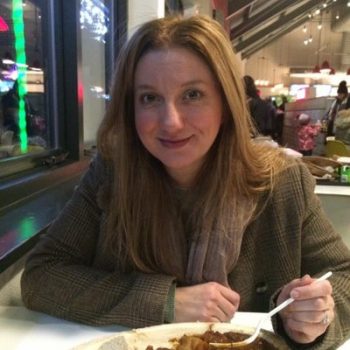By Audrey Throne
Guest writer for Wake Up World
Hate crime incidents abound in America today, and it is not only small minorities or the marginalized that are affected. In the small village of Wellsville in New York State, a swastika was painted onto a building on a softball field along with the words “MAKE AMERICA WHITE AGAIN”, while on the other end of the spectrum, a white man involved in a traffic accident was beaten and robbed by a group of black people, in Chicago. In a video of the incident circulating widely on Facebook late last year, bystanders were heard shouting “Don’t vote Trump!”
Such incidents make one lose faith in humanity, and question the rationality of those around us who are so blinded by hate. Motivated by intolerance and bias against an entire race, religion, ethnicity, nationality, disability, sexual orientation, gender, or gender identity, hate crimes rip families and communities apart, and plant the seeds of violence and terrorism.
But the expression of hate is not limited to those actions deemed ‘hate crimes’ alone. Hate-motivated incidents also include those actions that are motivated by bias but do not meet the necessary elements required to be considered a crime. This may include such behavior as name calling, racial slurs, social exclusion, or disseminating racist leaflets.
[pro_ad_display_adzone id=”110028″]
In the face of such hate, silence is apathy and apathy is acceptance. By not doing anything, we are accepting and condoning those actions that are motivated by bias and prejudice, and are hurting people. We must act, not in hate and not for revenge, but to promote understanding and compassion around us.
So what can we do?
At home
We can teach our children acceptance and the importance of respecting everyone by being mindful of our interaction with others. Avoid making stereotypical remarks and challenge those who do make them. Speak out against jokes and slurs that target people or groups. Just staying silent is not enough nor is it enough to refuse to laugh — because that signals tacit agreement to such views.
As the saying goes, knowledge is power. In this case, knowledge can oppose views about beliefs and practices that are untrue. By providing as much accurate information as possible to our children, spouses, family and friends we can help rejects myths and stereotypes. Another thing we can do is discuss the impact of prejudicial attitude and behavior with our families, especially our children, emphasizing on how hurtful this can be to others by teaching them empathy.
Understanding and acceptance can also be reinforced by planning family outings to different neighborhoods, community gatherings and cultural events, and visiting local museums and galleries that exhibit and celebrate art forms of different cultures and sub-cultures.
Our children are the next generation, and by teaching them about prejudice and stereotypes, and celebrating other cultures, we can help negate hate-motivated incidents and bigotry.
At your school
A sixth-grade class in Morgantown, W.V., painted over ‘skinhead’ graffiti on the outside wall of a convenience store. Their teacher had used the graffiti to discuss hatred and violence. After watching “Not In Our Town,” a video of how Billings, Montana, fought hate, the children concluded that, left to stand, the graffiti would convey community apathy. They became role models within Morgantown, with press coverage and congratulations received from the state Attorney General.
School should be a place where students learn not just understanding and tolerance, but also that the different forms of negative bias can be discussed and addressed openly and safely. Children can be taught through school programs and curriculum to understand and reject prejudice. Kids with a tendency toward discrimination can be identified early, and guided.
As teachers or involved parents we can encourage representation of all students on every school board, committee, group, publication and team. A school’s orientation program should be such that it addresses the needs of students from all backgrounds, so that they feel welcome when they start in a new school. A school exchange program that matches students from different schools to bring youth of differing backgrounds close together is another way of helping children understand and accept differences.
Books play an important role in increasing understanding. Research children’s books that represent the experiences of different ethnic groups and lifestyles, and then encourage children to read them. This can be done through reading programs at local bookstores and libraries that features these books. A fun and educational example is 16-year-old Kamila Khan, a marvel superhero who happens to be a second-generation Pakistani-American girl — proof that mainstream comics are expanding their horizons to account for cultural, racial and religious differences. By encouraging our children to incorporate such books and comics into their reading, we encourage the acceptance of others in a language they understand while making it fun and interesting.
At your workplace
As a boss, a colleague and a co-worker, look within yourself and around you, and question the issues that divide us, such as economic inequality, sexuality, religion, and the recently controversial topic of immigration. Through words and actions, you can work against prejudice, stereotyping and discrimination, and set an example of understanding and cooperation.
[pro_ad_display_adzone id=”110030″]
If you are an employer, you are in a position of influence. You can incorporate diversity as a core value, and create an environment conducive, articulate it in the company’s handbook or manual etc.
As an employee, be respectful and aware of other’s individual work styles. If something offends or confuses you, ask questions rather than judge silently. Learning about our co-worker’s backgrounds and sharing our own brings us closer together.
In your community
To band against hatred, we must unite in love. You can call a friend or a co-worker and help organize a group of allies from community groups, schools, clubs, churches, and other civic sources. Gather ideas from everyone and invite them to get involved. Create a diverse coalition that includes children, police and the local media.
You could use your community ties to help organize a walk/run event in which sponsored participants would donate all monies pledged to an equality or human rights organization. You could also establish human rights and community watch groups in your city or town.
Many communities facing a hate-group rally have held alternative events at the same hour, some distance away, emphasizing and celebrating the strength in community and diversity. These events give people a safe way for people to do something positive. Music therapy can also be used to calm people and lift spirits, all of which is needed to give a feel good vibe to counteract the feeling of hate and frustration. You could organize a music or drumming event in your community.
Think outside the box. When the Ku Klux Klan announced plans to clean up shoulders and ditches along a stretch of road under the Adopt-a-Highway program in Palatine, Illinois — and officials realized they couldn’t stop it — local teenagers flooded City Hall with so many applications that they claimed every inch of highway earmarked for the program and pushed the Klan onto a waiting list. “Truth and love and kindness and caring won out over hate,” Mayor Rita Mullins said. “It restored my faith in humanity.”
You can also reach out to the victims of hate crimes and let them know you are there. Support local advocacy groups, or consider starting a support network for victims in your area. Hate crimes, particularly against minority groups, tend to isolate their victims, and they can feel especially vulnerable and fearful as a result. Knowing that they have support from others goes a long way in making them feel less isolated.
Final Thoughts
There is much that we can do to spread compassion and understanding, and reduce the hate around us. What we cannot do is remain silent and passive. As Khalid Latif, the university chaplain at New York University, executive director of NYU’s Islamic Center and a chaplain for the NYPD, said in an article in CNN, “Failure to speak out against hate-filled actions or words matters, because in my opinion, if you remain silent, you’re just as culpable for the toxic results.”
About the author:
Audrey Throne is a mother and a professional blogger by choice. She received her masters in English literature from the University of Birmingham. As a blogger she writes about health, technology and management. Currently, she is associated with the heartfeltadopt Team.
You can find Audrey on Twitter @audrey_throne.
[pro_ad_display_adzone id=”110027″]








